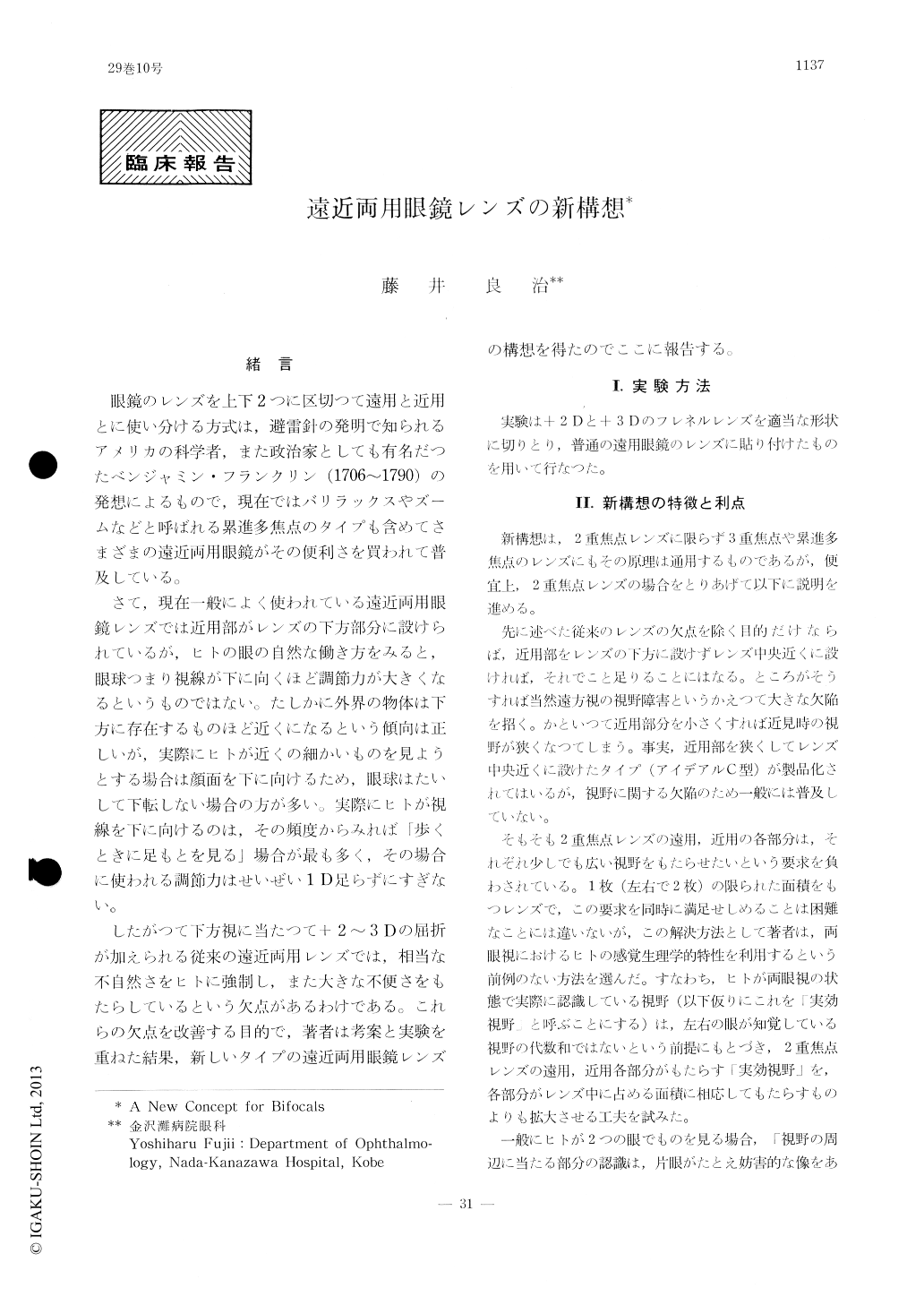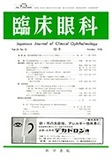Japanese
English
- 有料閲覧
- Abstract 文献概要
- 1ページ目 Look Inside
緒言
眼鏡のレンズを上下2つに区切つて遠用と近用とに使い分ける方式は,避雷針の発明で知られるアメリカの科学者,また政治家としても有名だつたベンジャミン・フランクリン(1706〜1790)の発想によるもので,現在ではバリラックスやズームなどと呼ばれる累進多焦点のタイプも含めてさまざまの遠近両用眼鏡がその便利さを買われて普及している。
さて,現在一般によく使われている遠近両用眼鏡レンズでは近用部がレンズの下方部分に設けられているが,ヒトの眼の自然な働き方をみると,眼球つまり視線が下に向くほど調節力が大きくなるというものではない。たしかに外界の物体は下方に存在するものほど近くになるという傾向は正しいが,実際にヒトが近くの細かいものを見ようとする場合は顔面を下に向けるため,眼球はたいして下転しない場合の方が多い。実際にヒトが視線を下に向けるのは,その頻度からみれば「歩くときに足もとを見る」場合が最も多く,その場合に使われる調節力はせいぜい1D足らずにすぎない。
In popularly used bifocal lenses, the reading segments are located at the bottom of each le-ns. Accordingly, a bifocals wearer is forced to lower his eyes unnaturally for reading, and is troubled when he looks at his feet while walk-ing. The author contrived a new type of bifo-cal lenses for improving these defect.
Cut-out Fresnel lenses attached on ordinary spectacle glasses were used for the experiment.
A fan-shaped reading segment is placed at the lower medial part of each lens ; it fans out from the point near the center of lens to the lower inner quadrant.

Copyright © 1975, Igaku-Shoin Ltd. All rights reserved.


